Wakefield, Quebec 作者: 来源: 发布时间:2021-12-06
I.Population and Area
-Area
Land: 196.43 square kilometres
-Population (2016)
Total: 2,767
-Density: 14.1 per squared kilometres
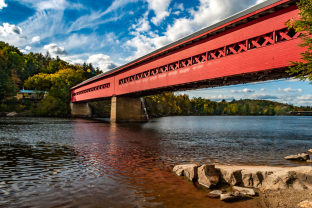
-Website: https://www12.statcan.gc.ca/census-recensement/2016/dp-pd/prof/details/Page.cfm?Lang=E&Geo1=CSD&Code1=1311014&Geo2=PR&Code2=24&Data=Count&SearchText=Scott&SearchType=Begins&SearchPR=01&B1=All
II.Natural Geography (environment and resources)
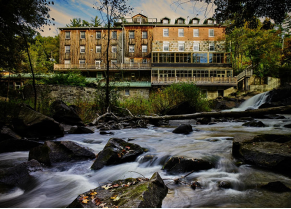
-Wakefield is one of many villages of the Municipality La Pêche, with the village centre on the western shore of the Gatineau River, at the confluence of the La Pêche River in the Outaouais region of the province of Quebec in Canada. It is thirty-five kilometres northwest of Ottawa, Ontario. The village, named after the city of Wakefield in West Yorkshire, England, is now the southern edge of the municipality of La Pêche, and was founded in 1830 by Irish, Scottish, and English immigrants. Wakefield is approximately a twenty-five-minute drive north of the Macdonald-Cartier Bridge that divides Gatineau and Ottawa (Ontario), along the Autoroute 5, a modern four lane divided highway which has recently been extended to the village. Wakefield is unique as a primarily Anglophone town in a primarily Francophone province.

-Get in
-By car
Take any bridge from Ottawa to Gatineau but the Macdonald Cartier bridge from King Edward Street is the most direct. Take Highway 5 to Maniwaki. Go north about 15 minutes past the Casino exit. Take Exit 28 and Wakefield Exit at the immediate roundabout. The Main Street is just down the hill. Total trip time from Byward Market area is about 20 minutes.
-By bus
-Greyhound goes from the Ottawa bus terminal to Wakefield once per day and takes about 1 hour and 15 minutes. A return ticket is about $15. The bus leaves Ottawa at 08:30, and (if it's running on schedule) leaves Wakefield at 15:05.
-Website: https://en.wikivoyage.org/wiki/Wakefield_(Quebec)
III.ECONOMY
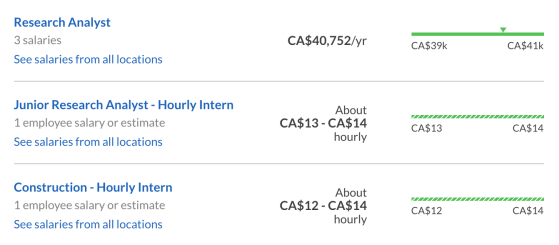
-Website: https://www.glassdoor.ca/Salary/Cushman-and-Wakefield-Montreal-Salaries-EI_IE7416.0,21_IL.22,30_IM990.htm
IV.Industrial Characteristics
-These land use areas are found inside the urban perimeter of the Wakefield Village, next to Route 105:
Local businesses and industries.
Heavy industries.
-The delimitation of these land use areas has for its main objective to promote the creation of a pole of attraction for companies and services requiring large land areas, as well as manufacturing and processing businesses. However, given that these spaces are located along the tourist corridor (Route 105) and at the southern entrance of the Municipality, the zoning must incorporate stricter control measures regarding land development, as well as for outside storage of materials and storage of heavy vehicles.
-Website: http://www.villelapeche.qc.ca/downloads/2016-04-04-projet-preliminaire-revise-en.pdf
V.Attractions
1.Covered bridge

-A covered bridge is a timber-truss bridge with a roof, decking, and siding, which in most covered bridges create an almost complete enclosure. The purpose of the covering is to protect the wooden structural members from the weather. Uncovered wooden bridges typically have a lifespan of only 20 years because of the effects of rain and sun, but a covered bridge could last 100 years.
-Design
-Typically, covered bridges are structures with longitudinal timber-trusses which form the bridge's backbone. Some were built as railway bridges, using very heavy timbers and doubled up lattice work.
-Most bridges were built to cross streams, and the majority had just a single span. Virtually all contained a single lane. A few two-lane bridges were built, having a third, central truss.
-Many different truss designs were used. One of the most popular designs was the Burr Truss, patented in 1817, which used an arch to bear the load, while the trusses kept the bridge rigid. Other designs included the King, Queen, Lattice, and Howe trusses.
-Early trusses were designed without an understanding of the engineering dynamics at work. In 1847, American engineer Squire Whipple published the first correct analysis of the way a load is carried through the truss, which enabled him to design stronger bridges with fewer materials.
-Bridges
-bout 1,600 covered bridges remain in the world. The relatively small number of surviving bridges is due to deliberate replacement, neglect, and the high cost of restoration. They tend to be in isolated places, making them subject to vandalism and arson.
-Europe
-The oldest surviving truss bridge in the world is the Kapellbrücke in Switzerland. Modern-style timber truss bridges were pioneered in Switzerland in the mid-1700s.
-United States
-Schuylkill Permanent Bridge in Philadelphia, the first covered bridge in America
-About 14,000 covered bridges have been built in the United States, mostly in the years 1825 to 1875. Today, surviving bridges are numbered at fewer than 1,000 by the United States Department of Transportation, and at 814 by The National Society for the Preservation of Covered Bridges as of 2009.
-The first known covered bridge constructed in the United States was the Permanent Bridge, completed in 1805 to span the Schuylkill River in Philadelphia. However, most other early examples of covered bridges don't appear until the 1820s. Extant bridges from that decade include New York's Hyde Hall Bridge and Pennsylvania's Hassenplug Bridge, both built in 1825, and the Haverhill-Bath Covered Bridge and the Roberts Covered Bridge, in New Hampshire and Ohio respectively, both built in 1829. The longest, historical covered bridges remaining in the United States are the Cornish-Windsor Bridge, spanning the Connecticut River between New Hampshire and Vermont, and Medora Bridge, spanning the East Fork of the White River in Indiana. Both lay some claim to the superlative depending upon how the length is measured.
-In the mid-1800s, the development of cheaper wrought iron and cast iron led to metal rather than timber trusses. Metal structures did not need protection from the elements, so no longer needed to be covered. The bridges also became obsolete because most were single-lane, had low width and height clearances, and could not support the heavy loads of modern traffic.
-Canada
-Between 1969 and 2015, the number of surviving covered bridges in Canada declined from about 400 to under 200.
-In 1900, Quebec had an estimated 1,000 covered bridges. Relative to the rest of North America, Quebec was late in building covered bridges, with the busiest decade for construction being the 1930s. Initially, the designs were varied, but around 1905, the design was standardised to the Town québécois, a variant on the lattice truss patented by Ithiel Town in 1820. About 500 of these were built in the first half of the 1900s. The last bridge was built by the Ministry of Colonisation in 1958 in Lebel-sur-Quévillon. There are now 82 covered bridges in Quebec, Transports Québec including the Félix-Gabriel-Marchand Bridge, the province's longest covered bridge.
-In 1900, New Brunswick had about 400 covered bridges. Today, there are 58 covered bridges in New Brunswick, including the world's longest, the Hartland Bridge.
-Wade LaPage (506) 375-1112 or 1-888-346-5777 Email cbgcc@nb.aibn.com
-Restaurant: Take out! – (506) 375-1110
-Maintenance: Matthew Harris (506) 375-8493
-General Manager: John Trecartin
-Website: https://coveredbridgegolf.nb.ca/contact/
2.Black Sheep
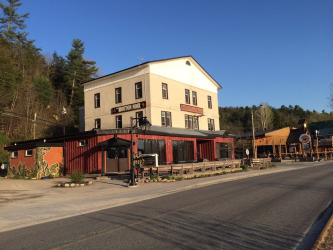
-Has become well known for top quality musical entertainment, and has hosted some concerts broadcast across Canada. Check listings in Ottawa newspapers, such as the Ottawa Citizen or on their web site. Cover varies between $7-20, depending on who is performing that evening.
- The Black Sheep Inn (Le Mouton Noir), 753 chemin Riverside,
-TEL: +1 819 459-3228
-Email: mouton@theblacksheepinn.com.
-Daily 14:00-23:30.
-Website: https://www.theblacksheepinn.com/
3.Gatineau Park
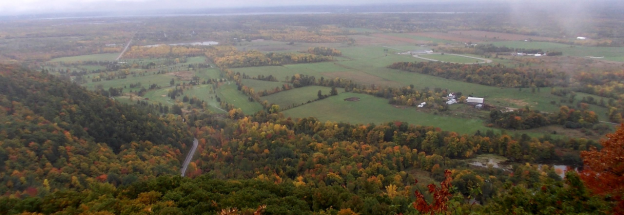
Gatineau Park is the outdoor playground for Canada's National Capital Region (Ottawa and Gatineau). It offers amazing possibilities for outdoor recreation, within a 20 minutes drive of either city. This includes: skiing (cross-country and downhill), hiking, canoeing, camping, rock-climbing, mountain biking, roller-blading, wildlife watching and leisurely strolls.
-Gatineau Park is a 361 km² wedge of land extending north and west from the city of Gatineau. The main entrance to the park is 4 km north of downtown Ottawa. It remains the only federal park that is not a national park. The National Capital Commission manages the park, not Parks Canada.
-The park's area has a long history of human inhabitation and usage predating the arrival of European settlers. Its more recent pre-park history includes various forms of human exploitation such as farming, logging, hunting, and industrial activity.
Gatineau Park Visitor Centre
TEL: +1 819-827-2020
toll-free: +1-866-456-3016. May-Oct: daily 09:00-17:00; Nov-Apr M-F 09:00-16:00, Sa Su 09:00-17:00. Information officers are on-site to provide tips and advice. You'll also find an exhibition on ecosystems, passes and souvenirs for sale, and washrooms.
VI.History
-One of the first villages to be established along the Gatineau River, Wakefield was founded in 1830 by mostly Irish immigrants and with the help of a few British and Scottish settlers. While nestled in Quebec, to this day Wakefield is a bilingual town, welcoming tourists in both french and english. Because of it’s proximity to the river, the local lumber industry flourished and Wakefield grew into the beautiful village it is today – one whose charm blends its connection to history with a modern bohemian feel.
-Today, Wakefield is best known for it’s eclectic and lively arts scene. It’s home to many different types of artists seeking inspiration and refuge in Wakefield’s picturesque community. Explore the many galleries and lively festivals that make Wakefield so unique, or take a step back in time by visiting one of its many historical sites. No matter how long your stay, Wakefield offers a warm welcome of local pubs, galleries, farmers’ markets, and boutiques – all steeped in rich history and with a touch of modern charm.
VII.Other information
-Check In - Out
-We live on site and love interacting with guests, but we do not operate a 24-hour front desk. Room doors function with coded locks, and these 4 digit codes will be provided to you upon checking in. In the event that you cannot check-in during our designated times, you may contact us via email or phone to notify us of a late arrival. In this instance we will email you your door code for your convenience.
-Standard check-in time: 4pm to 7pm
-Standard checkout time: 11am
-If you contact us we will attempt to offer some flexibility on these times. After 9pm we must consider a guest as a “no show” and charge the room in full. Should you anticipate arriving later than 9pm, please notify us to guarantee that your room will be held.
-LATE CHECKOUT, EARLY CHECK-IN, AND LATE ARRIVALS
-Check in time is 4:00pm to 7:00pm, and our check out time is 11:00am. We do offer convenient upgrades for both (late check-out and early check-in) so that you can enjoy 2 extra hours in the Gatineau Park.
-We’re a small family-run business. We live on site and love interacting with our guests. That means when you need a local recommendation or help with some activity ideas, we’re there for you. But it also means we don’t run a 24/7 check-in desk. To be able to accommodate late arrivals after 7pm, we ask that guest please add our “late arrival upgrade” during their reservation. This $20 upgrade allows us to staff for a late arrival, or make sure we can provide you what you need for check-in.
-Website: https://wakefieldinn.ca/bed-and-breakfast-policies/
VIII.Contact information
-Government
Mayor: Guillaume Lamoureux
-CONTACT US
TEL: 819-720-0222
1-844-720-0222
Email: reservations@belledenuit.ca
Address: 21 Chemin Burnside, Wakefield, QC, Canada
-Website: https://wakefieldinn.ca/historic-wakefield-quebec/
